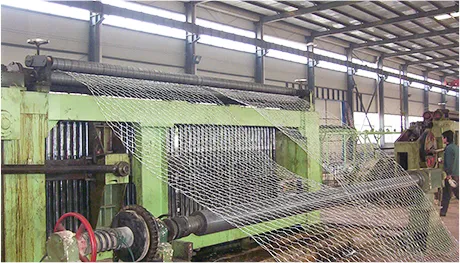-
 Phone:
Phone: -
 Email:
Email:

Rockfall Protection Solutions Using Advanced Netting Techniques for Safety and Stability
The Importance of Rockfall Netting in Civil Engineering
Introduction
Rockfall incidents pose significant risks to infrastructure, human safety, and the natural environment, especially in hilly and mountainous regions. To mitigate these hazards, engineers and geologists have developed various protective measures, one of which is rockfall netting. This article will delve into the fundamentals of rockfall netting, its applications, benefits, and the technology driving its effectiveness in safeguarding both people and property.
Understanding Rockfall Netting
Rockfall netting is a type of passive rockfall protection system designed to catch and contain falling rocks before they can reach roads, buildings, or other critical areas. It consists of a mesh-like structure typically made from high-tensile steel wire, which is anchored into the ground or mounted on rockfaces. The primary function of rockfall netting is to prevent rocks of various sizes from dislodging and rolling down slopes, thus safeguarding infrastructure and minimizing the risk of injury to people.
Applications of Rockfall Netting
Rockfall netting is essential in numerous applications. Highways and railways that traverse mountainous landscapes often utilize rockfall netting systems to reduce the likelihood of rockslides impacting infrastructure. These systems are strategically placed along roadways, tunnel entrances, or railway tracks to create a protective barrier. Additionally, rockfall netting is utilized in the construction of dams, where stability and safety are paramount. Recreational areas, like hiking trails and climbing sites, also benefit from rockfall netting to enhance the safety of outdoor enthusiasts.
Benefits of Rockfall Netting
rockfall netting

The implementation of rockfall netting comes with several benefits. Firstly, it significantly reduces the risk of injury to individuals traversing areas prone to rockfall. Dramatically improving safety measures creates a sense of security for both drivers and pedestrians, encouraging the use of these pathways.
Secondly, rockfall netting protects valuable infrastructure. By preventing the unpredictable nature of falling rocks from damaging vehicles, buildings, or other structures, the costs associated with repairs and maintenance are drastically reduced. This prolongs the lifespan of highways and railways, ultimately contributing to better resource management.
Moreover, rockfall netting is cost-effective compared to other forms of rockfall protection, such as rock sheds or large retaining walls. It requires less material and can often be installed quickly. The low-impact nature of rockfall netting means it can blend seamlessly into the landscape, preserving the natural beauty of the environment while providing engineering solutions.
Technological Advancements in Rockfall Netting
Recent advancements in materials science have significantly enhanced the performance of rockfall netting. Engineers now utilize high-strength polyethylene and metal alloys, which improve durability and resistance to environmental factors. Innovative design techniques, including the incorporation of energy-absorbing systems, allow for more effective containment of falling rocks.
Additionally, the use of advanced monitoring technologies, such as sensors and remote monitoring systems, aids engineers in evaluating the conditions on cliff faces. These technologies help in assessing when and where rockfall netting needs to be installed or maintained, ensuring ongoing protection and adaptability to changing geological conditions.
Conclusion
In conclusion, rockfall netting represents a vital component of modern civil engineering aimed at preserving human safety and protecting infrastructure. As technology continues to evolve, the effectiveness and efficiency of rockfall netting systems will only improve. With increasing awareness of environmental challenges and the need for sustainable engineering solutions, rockfall netting stands out as a proactive measure that serves both human interests and ecological balance. Moving forward, embracing innovative practices and technologies in rockfall mitigation will be crucial in addressing the ever-present risks associated with rockfall incidents, ensuring that both communities and natural landscapes remain safe and resilient.
-
Wire Mesh for Every Need: A Practical SolutionNewsJul.25,2025
-
Steel Fences: Durable, Secure, and Stylish OptionsNewsJul.25,2025
-
Roll Top Fencing: A Smart Solution for Safety and SecurityNewsJul.25,2025
-
Cattle Farm Fencing Solutions for Maximum SecurityNewsJul.25,2025
-
Affordable Iron Binding Wire SolutionsNewsJul.25,2025
-
Affordable Galvanized Wire SolutionsNewsJul.25,2025
-
Wire Hanger Recycling IdeasNewsJul.25,2025








